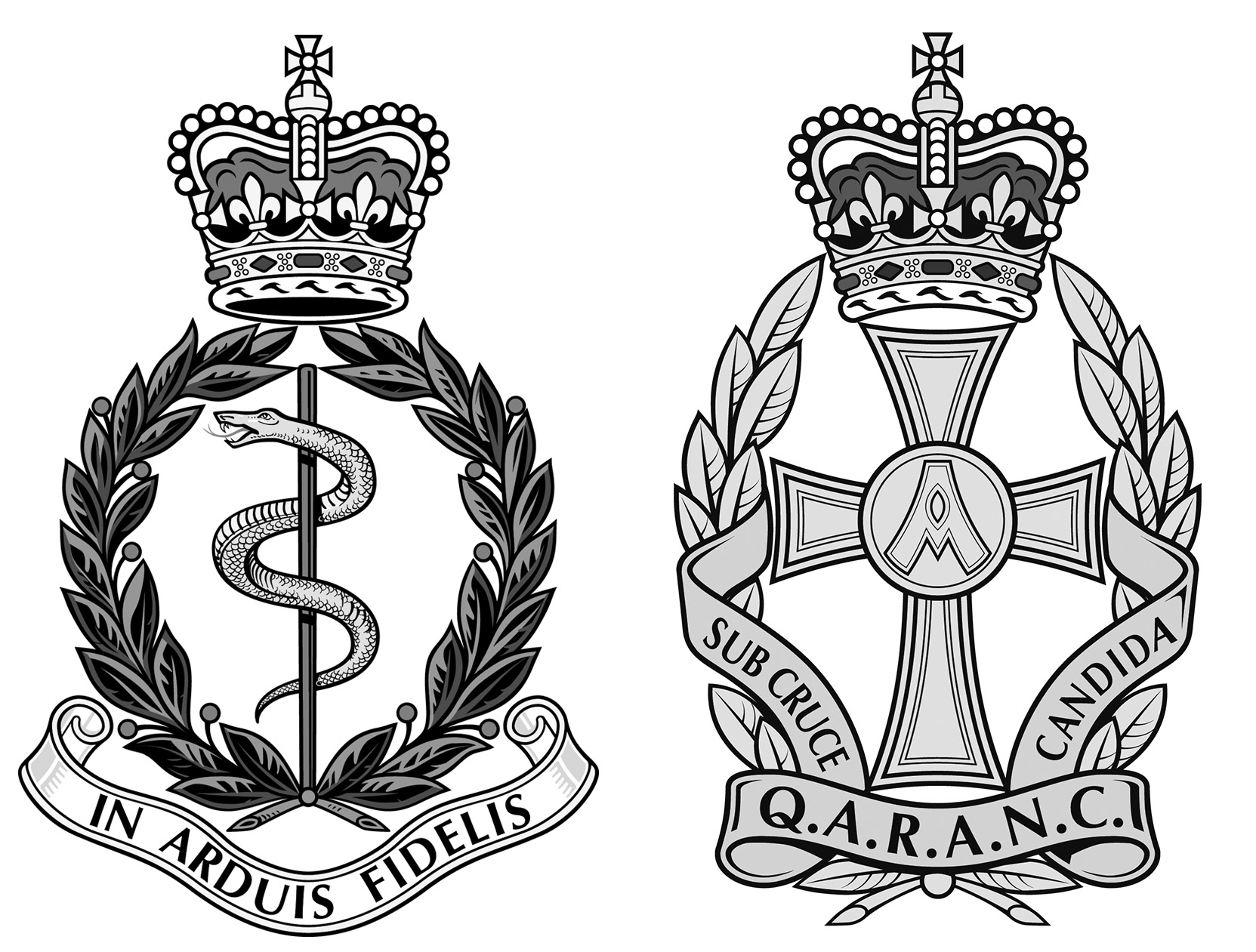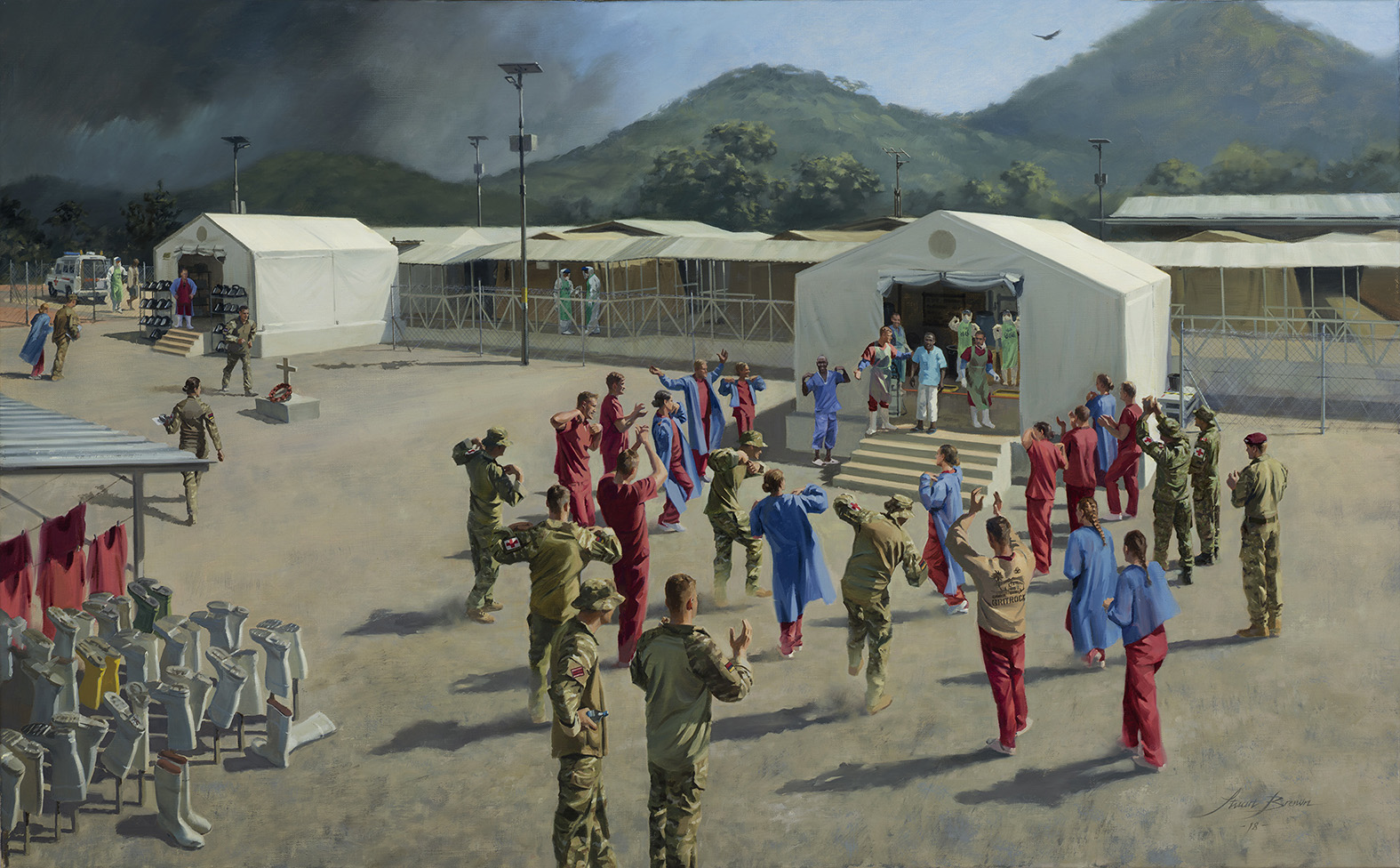‘THE EBOLA SURVIVORS’ DANCE’
Description

Commissioned by the Royal Army Medical Corps.
During Operation GRITROCK in Sierra Leone from 2014-15, personnel from the UK Defence Medical Services and the Royal Canadian Medical Service provided advanced clinical care for Ebola patients at a treatment unit in Kerry Town.
Good survival rates were achieved and it was considered important to celebrate the discharge of survivors from the unit with a culturally-appropriate song and dance routine, which was devised with assistance from the local translators.
On 8 August 2014, the World Health Organisation (WHO) declared the Ebola crisis in West Africa a Public Health Emergency of International Concern (PHEIC). In response to this, the United Kingdom (UK) government launched a combined civilian and military effort to provide planning, engineering, logistical and medical support to the Sierra Leone government. The military component of this was Operation GRITROCK, which made the UK Defence Medical Services (DMS) responsible for the design and running of an Ebola Virus Disease Treatment Unit (EVDTU) for affected healthcare workers at Kerry Town on the Freetown Peninsula. DMS personnel began an intensive training programme on 24 September 2014 and deployed to Sierra Leone on 16 October 2014 and the EVDTU opened on 5 November 2014. From 28 December 2014, DMS personnel were joined by colleagues from the Royal Canadian Medical Service and they worked together through a total of four roulements until the end of the deployment on 30 June 2015.
This EVDTU was designed to provide the highest level of care possible in order to provide reassurance for both local and international healthcare workers who were involved in combatting the Ebola outbreak in Sierra Leone. The DMS personnel running the unit consisted of physicians, nurses, healthcare assistants, combat medical technicians, allied healthcare professionals and medical support officers.
‘The Ebola Survivors’ Dance’ shows the clinical areas of the EVDTU. On the left are the arrival, assessment and ‘donning’ areas, in the centre are the ‘suspected’ and ‘confirmed’ areas and on the right are the ‘step-down’ and ‘doffing’ areas, which is also where survivors were discharged from. It was considered important to celebrate the discharge of survivors from the unit to show the benefits of isolation and treatment and to reassure people that they were cured and no longer infectious to others. Therefore a culturally-appropriate song and dance routine was devised with assistance from the local translators and this was performed by all members of the multi-disciplinary team when survivors were discharged.
WHO ended the PHEIC on 29 March 2016, but not before the Ebola epidemic had claimed the lives of over 11,000 people in West Africa and left thousands of others with the after-effects of the virus. The British and Canadian military personnel who deployed to Sierra Leone can be credited with putting themselves in harm’s way as they contributed to the large-scale international effort to bring the outbreak under control.
Operation GRITROCK also enhanced DMS capabilities for further humanitarian operations in the future.
Prints
|
Limited Edition Of 50 Artist Proof Lithographic Art Prints Artist signed £92 (approx USD $120) |
£92.00 |

